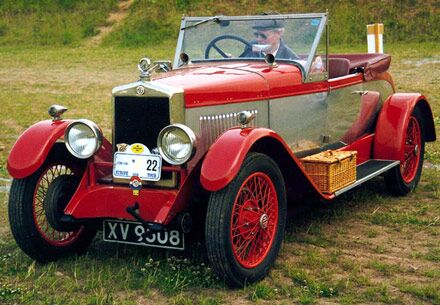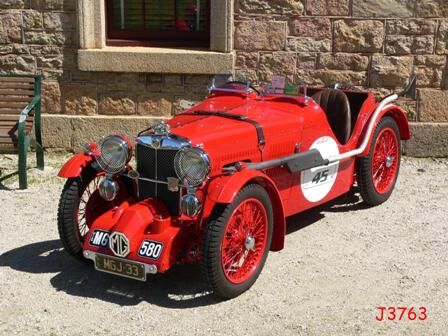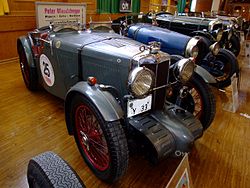J Type
A technical overview and history of the J1
The J1 was the four seat car in the range. The engine was the 847 cc unit previously seen in the C-Type with twin SU carburettors giving 36 bhp. The car cost £220 in open and £225 in Salonette form.
The J2 was the commonest car in the range and was a road going 2 seater. Early cars had cycle wings but these were replaced in 1933 by the full length type that was typical of all sports MGs up to the 1950’s TF. The top speed of a standard car was 65 mph but a specially prepared one tested by The Autocar magazine reached 82 mph. The car cost £199. A couple of serious failings of a J2, was that it only had a two bearing crank shaft which, due to metal fatigue and stress, was almost certain to break at some stage and which could, if at speed, basically destroy the engine block. Its other problem was that it was not fitted with hydraulic brakes as used in cars of today, but had Bowden cables to each drum. Naturally this is well before luxuries such as power assisted brakes so in an emergency you literally had to stand on the brake pedal which then ran the risk of breaking one or more cables which made driving and stopping something of an adventure. The non syncromesh gearbox takes some getting used to but with its short gear stick it becomes second nature to double de-clutch and rare to grind the gears.
The J3 was a racing version with the engine capacity reduced to 746 cc by shortening the stroke from 83 to 73 mm and fitted with Powerplus supercharger. The smaller engine capacity was to allow the car to compete in 750 cc class racing events. Larger brakes from the L-Type were fitted.




